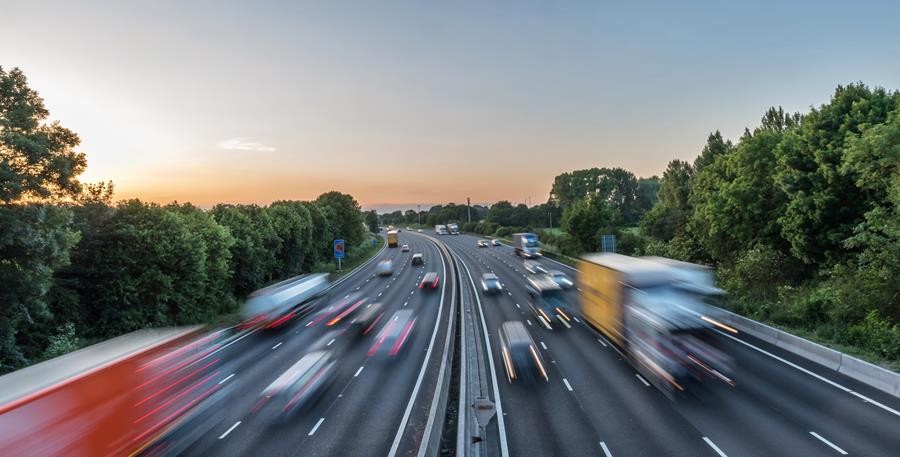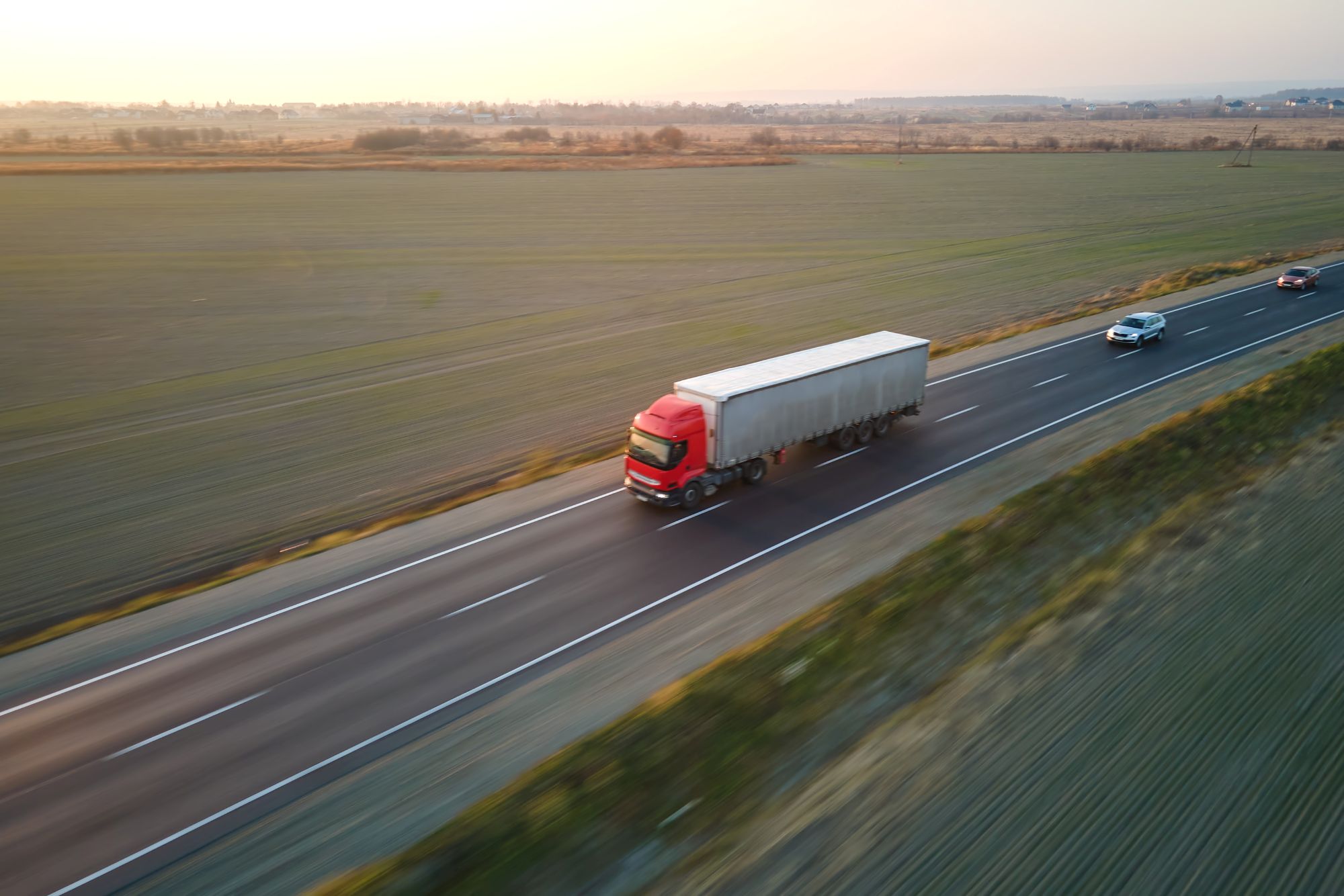
Susie Jones
A fenntarthatóság felé vezető út: Az európai kibocsátási kihívás a közlekedési ágazatban
Létrehozva: 08. 08. 2024
•
Frissítve: 08. 08. 2024
A Clean Technica 2024. évi jelentése szerint a közúti közlekedésből származó kibocsátások több mint 25%-a az európai közlekedési ágazatból származik - a nehézgépjárművek a kibocsátások 85%-áért felelősek (a fennmaradó részt autóbuszok teszik ki).
A jelenlegi ütem mellett 2030-ra az európai üvegházhatásúgáz-kibocsátás közel felét csak a közlekedési ágazat fogja kitenni - 1990 óta Európa közlekedési kibocsátása több mint negyedével tovább nőtt. A kibocsátás a gazdaság egészében csökkent - a 2007-es csúcspont óta azonban a közlekedési ágazat szén-dioxid-kibocsátása több mint háromszor lassabban csökken, mint a gazdaság többi része.
Mi az oka a fuvarozóipar növekvő CO2-kibocsátásának?
Az e-kereskedelem és a házhozszállítási szolgáltatások elterjedése óta jelentősen megnőtt az igény arra, hogy több teherautó közlekedjen az utakon. Következésképpen a megnövekedett kereslet a CO2-kibocsátás növekedését eredményezte a fuvarozási ágazatban.
A [Clean Technica] (https://cleantechnica.com/2024/05/13/eu-wisely-stiffens-road-freight-passenger-emissions-guidance/) jelentése a belföldi árufuvarozás tonnatartalmáról a különböző szállítási módok (közúti, vasúti és vízi) tekintetében kimutatta, hogy a közúti árufuvarozás Európában dominánsabb, mint a vasúti és vízi, összehasonlítva más földrajzi területekkel (USA és India). Bár Kína jobban támaszkodik a közúti áruszállításra, a jelentésből kiderült, hogy az ország nagyjából 600 000 elektromos teherautóval szállítja az árukat.

Milyen tervek vannak érvényben Európában a CO2-kibocsátás csökkentésére?
Az Európai Parlament elfogadta az [európai éghajlatvédelmi törvényt] (https://climate.ec.europa.eu/eu-action/european-climate-law_en#:~:text=The%20European%20Climate%20Law%20writes,2030%2C%20compared%20to%201990%20levels.) a növekvő CO2-kibocsátás kezelése érdekében. E törvény részeként az EU 2030-ig legalább 55%-ra emelte az üvegházhatású gázok nettó kibocsátásának csökkentésére vonatkozó uniós célkitűzést, ami 2050-re jogilag kötelezővé teszi az éghajlat-semlegességet.
2024 májusában az uniós országok törvényt hagytak jóvá a tehergépkocsik CO2-kibocsátásának csökkentéséről. Az új törvény előírja, hogy az EU-ban 2040-től értékesített új nehéz tehergépjárművek károsanyag-kibocsátás-mentesek legyenek, miközben ugyanerre az évre az új nehéz tehergépjárművek CO2-kibocsátásának [90%-os] (https://www.reuters.com/business/environment/eu-countries-approve-law-slash-trucks-co2-emissions-2024-05-13/#:~:text=The%20law%20will%20enforce%20a,CO2%2Demitting%20vehicles%20in%202040) csökkentését írja elő. A gyártóknak nagy mennyiségű teljesen CO2-mentes nehéz tehergépjárművet - például elektromos és hidrogénüzemű járműveket - kell értékesíteniük, hogy ellensúlyozzák a szén-dioxid-kibocsátó járművek fennmaradó értékesítését.
Milyen intézkedéseket tehetnek a flottakezelők a CO2-kibocsátás csökkentése érdekében?
A flottakezelők intézkedéseket tehetnek CO2-kibocsátásuk csökkentése érdekében:
A durva fékezés, a gyors gyorsítás és az üresjárat növelheti az üzemanyag-fogyasztást és az üvegházhatású gázok kibocsátását - Bár a járművezetők viselkedésének nyomon követése kihívást jelenthet, a mesterséges intelligencia technológia folyamatos visszajelzést adhat a járművezetőknek és a flottakezelőknek. Tudjon meg többet arról, hogy az AI hogyan befolyásolhatja pozitívan a fenntarthatóságot a fuvarozási ágazatban.
A régebbi járművekkel rendelkező flották hidrogénezett növényi olajra (HVO), hidrogénre vagy elektromos meghajtású nehéz tehergépjárművekre válthatnak, hogy jelentősen csökkentsék a kibocsátást. A flottakezelőknek azonban figyelembe kell venniük, hogy az alternatív üzemanyaggal működő járművek mekkora távolságot tudnak megtenni, és milyen költségvonzatai vannak.
A SNAP Account lehetővé teszi a flottakezelők számára, hogy csökkentsék a kitérő kilométereket - a SNAP Account ügyfelei számára elérhető több mint 600 szolgáltatási partnerrel a flottakezelők éjszakai megállókat tervezhetnek járművezetőik számára az útvonalon.
Megvan-e az infrastruktúra az elektromos tehergépjárművek töltéséhez?
Egy [PwC tanulmány] (https://www.strategyand.pwc.com/de/en/industries/transport/the-dawn-of-electrified-trucking.html) szerint 2030-ra az összes teherautó egyharmada elektromos meghajtású lesz Európában. Mivel a flottatársaságok lépéseket tesznek a villamosítás irányába, a teherautó-állomásoknak Európa-szerte képesnek kell lenniük arra, hogy kielégítsék az elektromos töltőállomások iránti igényt.
Az infrastruktúra biztosítása sok kamionmegálló és benzinkút számára költségekkel jár. Azok azonban, akik már most is rendelkeznek elektromos töltőkkel, jó helyzetben vannak ahhoz, hogy kihasználják az elektromos teherautók jövőbeli hullámainak előnyeit. 2030-ra a nyilvános töltőállomások száma Európában több mint [3600-ra] fog nőni (https://www.2win.eu/blog/electric-trucks/) - Az EU az alternatív üzemanyag-infrastruktúráról szóló rendelettel (AFIR) ambiciózus törvényt terjesztett elő a töltésre vonatkozóan. Az AFIR azt tervezi, hogy a főúthálózatot 60 km-enként töltőállomásokkal szerelik fel - elegendő töltési energiát és hidrogénkapacitást biztosítva ahhoz, hogy a teherautó- és autóbuszflották 9%-a 2030-ra zéró kibocsátású legyen.
Melyik európai országnak van a legtöbb CO2-kibocsátása?
2021-ben Németország, Franciaország és Olaszország volt a felelős a legnagyobb üvegházhatású gázok (ÜHG) összkibocsátásáért - [375 000 és 740 000 kt CO2] között (https://ccpi.org/which-european-countries-are-the-worst-climate-polluters-and-why/). A nagyobb népességű országok azonban több üvegházhatásúgáz-kibocsátást termelnek - ezért az üvegházhatású gázok összkibocsátását vizsgálva torz képet kapunk.
Ha a kibocsátást pártatlanul nézzük, akkor más a kilátás: 2021-ben Luxemburg, Írország és a Cseh Köztársaság produkálta a legmagasabb egy főre jutó kibocsátást az EU-ban.
Mi a legkörnyezetbarátabb módja az áruszállításnak?
A vasúti áruszállítás az egyik legtisztább szállítási mód, de más előnyökkel is jár:
Csökkenti a közúti torlódásokat, ami hozzájárul a levegőminőség javulásához.
A vasút gyorsabb áruszállítást tesz lehetővé, és megszünteti a nehéz közlekedési akadályokat.
Az alternatív üzemanyaggal működő teherautók az áruszállítás egy másik környezetbarát módja. A hidrogénezett növényi olaj (HVO) a termék teljes életciklusa során azonnal akár [90%-kal] (https://www.gov.uk/government/publications/greenhouse-gas-reporting-conversion-factors-2023) csökkentheti az üvegházhatást okozó gázolaj kibocsátását a hagyományos dízelhez képest. A Certas Energy HVO áll a tisztább alternatívára való áttérés mögött - segítve a vállalkozásokat fenntarthatósági céljaik elérésében és a nettó zéró jövőjük felé tett érdemi lépések megtételében.



